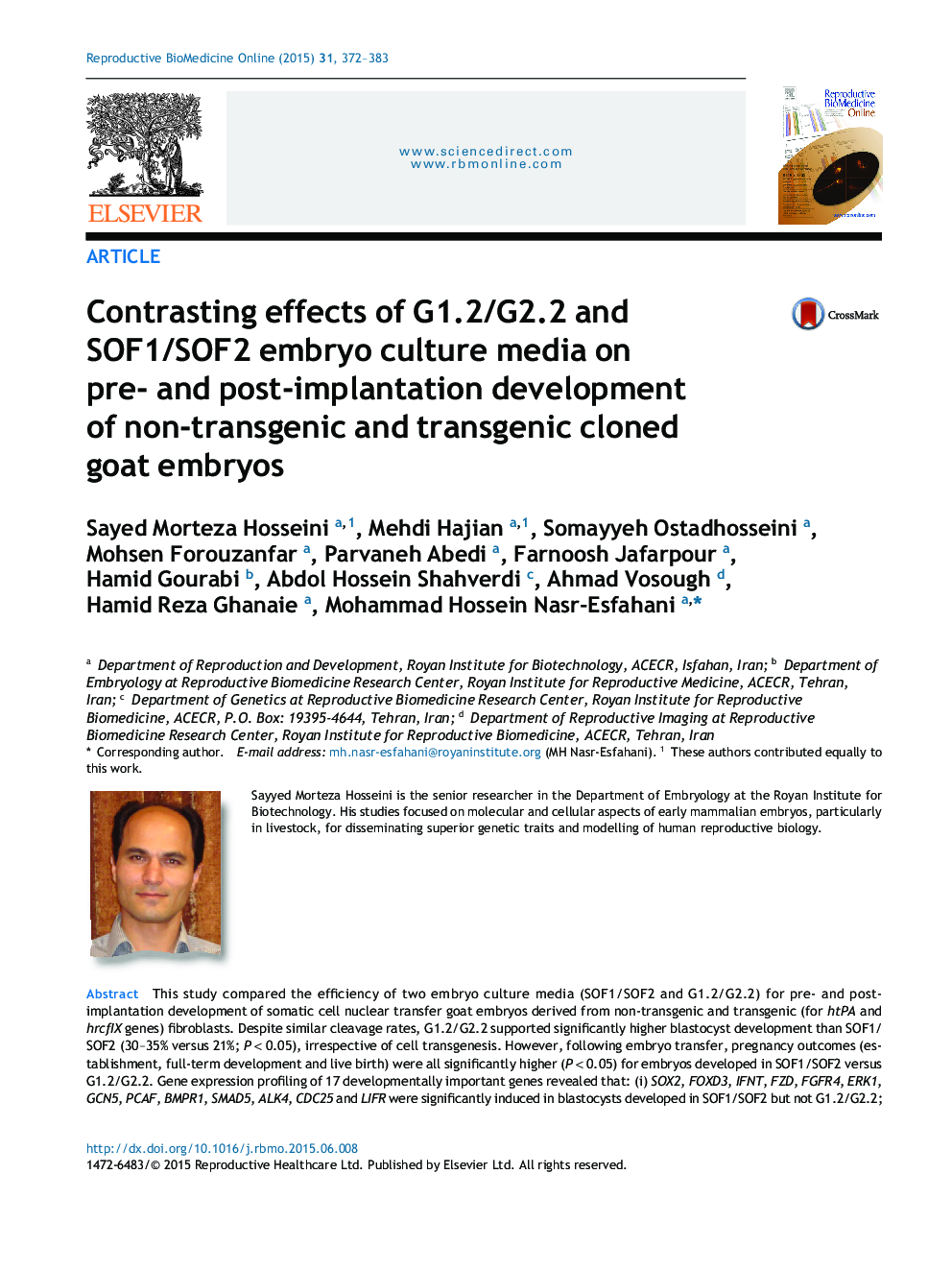| Article ID | Journal | Published Year | Pages | File Type |
|---|---|---|---|---|
| 6188779 | Reproductive BioMedicine Online | 2015 | 12 Pages |
â¢Significantly higher in-vitro development of goat cloned embryos in G1.2/G2.2 vs. SOF1/SOF2.â¢Significantly higher in-vivo development of goat cloned embryos in SOF1/SOF2 vs. G1.2/G2.2.â¢Up-regulation of WNT, FGF and TGFβ signaling pathways in goat cloned embryos cultured in SOF1/SOF2 compared with those cultured in G1.2/G2.2.
This study compared the efficiency of two embryo culture media (SOF1/SOF2 and G1.2/G2.2) for pre- and post-implantation development of somatic cell nuclear transfer goat embryos derived from non-transgenic and transgenic (for htPA and hrcfIX genes) fibroblasts. Despite similar cleavage rates, G1.2/G2.2 supported significantly higher blastocyst development than SOF1/SOF2 (30-35% versus 21%; P < 0.05), irrespective of cell transgenesis. However, following embryo transfer, pregnancy outcomes (establishment, full-term development and live birth) were all significantly higher (P < 0.05) for embryos developed in SOF1/SOF2 versus G1.2/G2.2. Gene expression profiling of 17 developmentally important genes revealed that: (i) SOX2, FOXD3, IFNT, FZD, FGFR4, ERK1, GCN5, PCAF, BMPR1, SMAD5, ALK4, CDC25 and LIFR were significantly induced in blastocysts developed in SOF1/SOF2 but not G1.2/G2.2; (ii) OCT4, CTNNB and CDX2 were similarly expressed in both groups; and (iii) AKT was significantly higher in G1.2/G2.2 than SOF1/SOF2 (P < 0.05). Following IVF, although blastocyst development in G1.2/G2.2 was significantly higher than SOF1/SOF2 counterparts, the majority of assessed genes were similarly expressed in blastocysts developed in both groups. It was concluded that the long-term programming effects of embryo culture medium and/or embryo production method may irreversibly affect post-implantation development of cloned embryos through defined molecular pathways.
